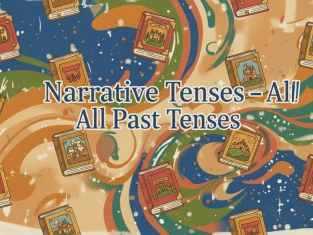Present Perfect vs Past Perfect
Table of Contents
Exercises
Explanation
1. Present Perfect
Form: have / has + past participle (V3)
Examples
-
I have visited Rome twice.
-
She has lost her keys.
-
They haven’t finished the project yet.
We use the Present Perfect when:
A. The action started in the past and has a connection to now
-
I have known him for many years.
(= I still know him.)
B. We talk about life experiences
-
She has met many famous people.
(= Experience in her life, time not important.)
C. Something has changed over time
-
His cooking has improved a lot.
D. The action is unfinished
-
We haven’t decorated the room yet.
Present Perfect = past action + present result
2. Past Perfect
Form: had + past participle (V3)
Examples
-
I had eaten breakfast before the meeting started.
-
They had never seen snow before their trip.
-
Had she finished the letter before you arrived?
We use the Past Perfect for:
A. The earlier of two past actions
-
She had left the café before I got there.
(= She left first, I arrived later.)
B. Giving reasons for a past situation
-
He was upset because he had failed the exam.
Past Perfect = “past before the past”
3. Present Perfect vs Past Perfect – Key Difference
|
Tense |
Meaning |
Example |
|
Present Perfect |
Past action with a connection to the present |
I have broken my glasses. (= They are still broken now.) |
|
Past Perfect |
Action finished before another past event |
I had broken my glasses before the lesson started. |
4. “Have had” – Is it Present Perfect or Past Perfect?
Look at the first verb:
-
I have had a headache all morning.
→ The first verb is have, so it’s Present Perfect. -
I had had the phone for years before it stopped working.
→ The first verb is had, so it’s Past Perfect.
Quick Summary
-
Present Perfect = action started in the past + still true / still relevant now
-
Past Perfect = action finished before another past action

